By Jay Landers
Construction began in late September on the 135,000 sq ft Robert Day Sciences Center at Claremont McKenna College in Claremont, California. Designed by the architecture firm BIG-Bjarke Ingels Group, the building will house the Kravis Department of Integrated Sciences, which employs a multidisciplinary, computational approach to advance knowledge in the fields of genetics, the human brain, and climate change.
In a nod to the multidisciplinary nature of the work to be conducted within it, the new sciences center is designed with an open, flowing layout intended to promote cohesion and cooperation among the scientists and students engaged in their various pursuits.
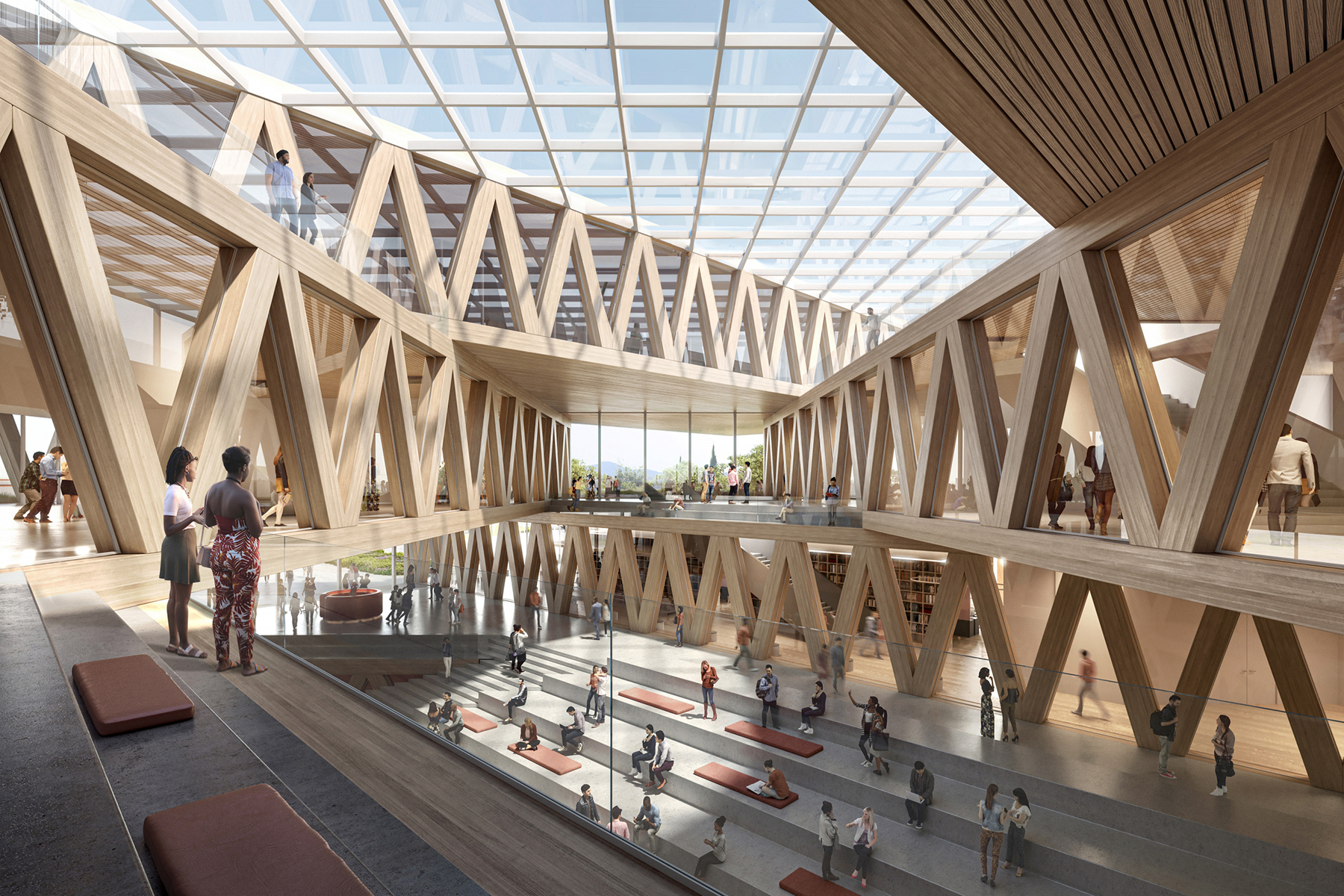
Atrium. (Rendering courtesy of BIG-Bjarke Ingels Group)
“More than ever, we are seeing the confluence of previously distinct disciplines: Breakthroughs in computer and data science lead to breakthroughs in the natural and life sciences,” said Bjarke Ingels, the founder and creative director of BIG, in a Sept. 30 news release. “As a consequence, we need to provide spaces for the integration of these previously siloed sciences.” The architecture for the Robert Day Sciences Center seeks to maximize that integration and interaction.
To this end, the building’s labs and classrooms are “stacked in a Jenga-like composition, framing a column-free, open internal space with the freedom and flexibility to adapt the ever-evolving demands of technology and science,” Ingels said.
Each of the three above-ground floors is designed as a stack of two rectangular blocks that together are rotated 45 degrees from the floor below. The long edge of each block consists of a rectangular wood-clad truss, while the shorter sides comprise a floor-to-ceiling glass facade.
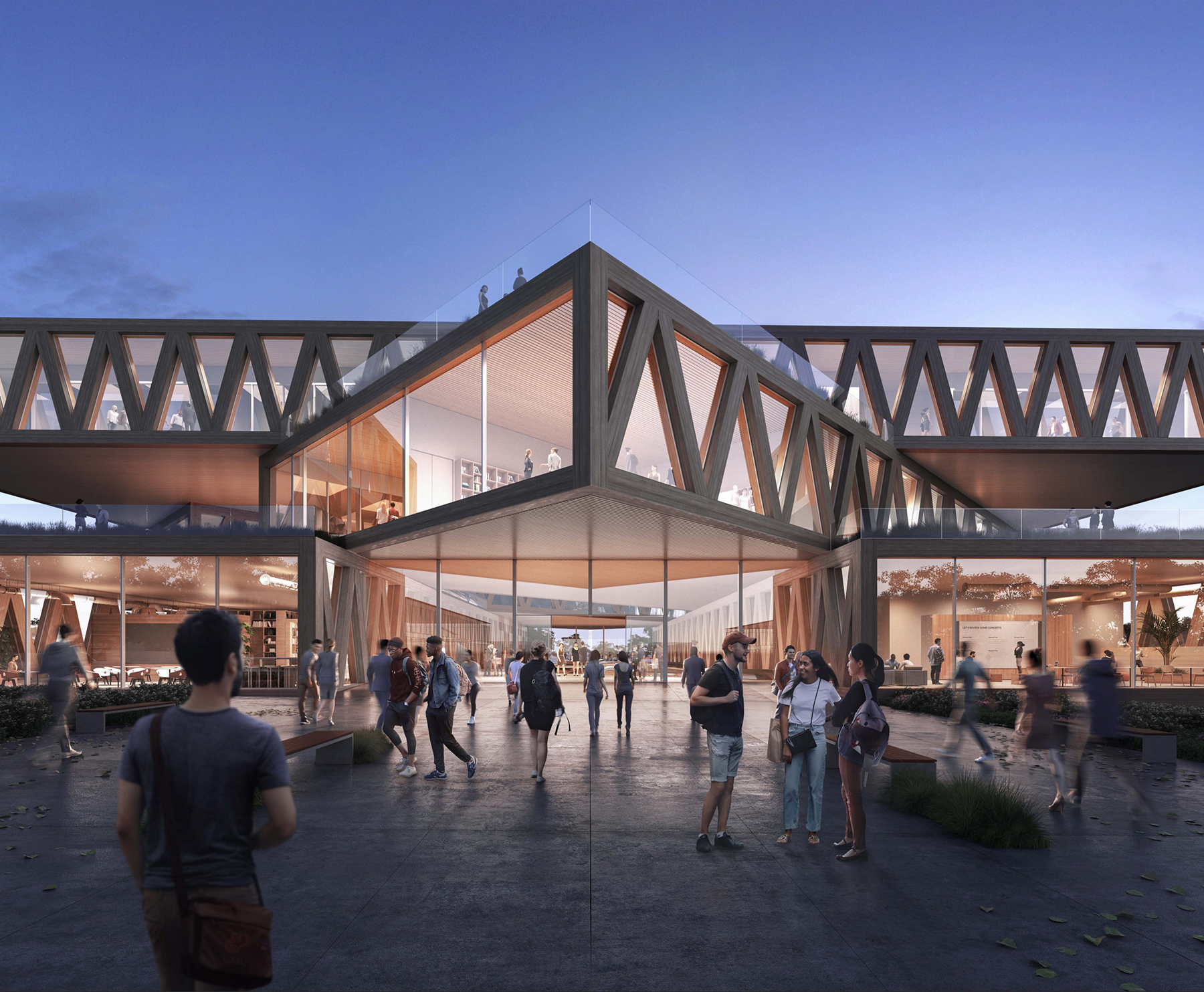
East entrance. (Rendering courtesy of BIG-Bjarke Ingels Group)
“By literally stacking disciplines together, the building becomes an expression of collaboration and a crossroads for scientific thought,” said Leon Rost, a partner at BIG, in the news release.
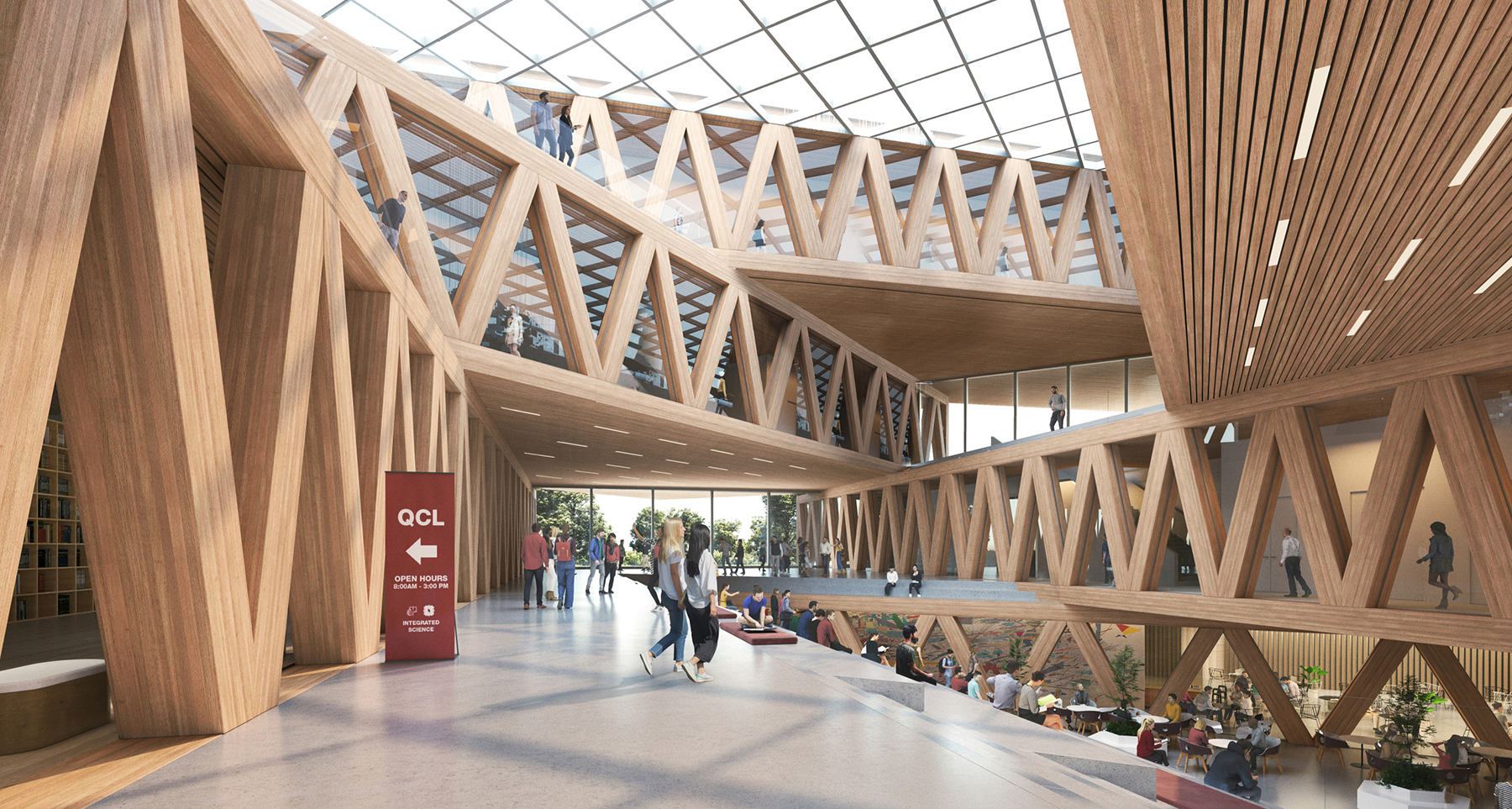
Atrium. (Rendering courtesy of BIG-Bjarke Ingels Group)
“Each level of the building is oriented towards a different direction of the campus, channeling the flow of people and ideas internally between the labs and the classrooms as well as externally between the integrated sciences and the rest of the campus,” Ingels said.
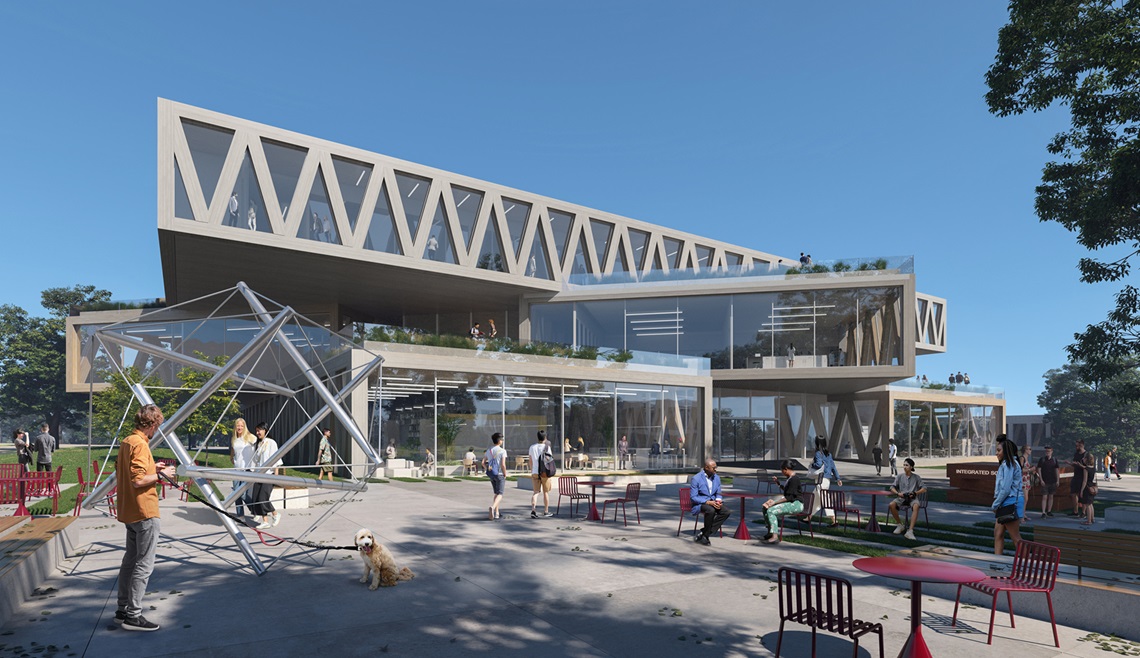
Northwest Plaza. (Rendering courtesy of BIG-Bjarke Ingels Group)
The rotation of each floor results in a full-height atrium that provides a skylit meeting and interaction space for faculty and students. Eight outdoor roof terraces provide panoramic views across the campus and beyond and will feature a mix of hardscape and softscape areas.
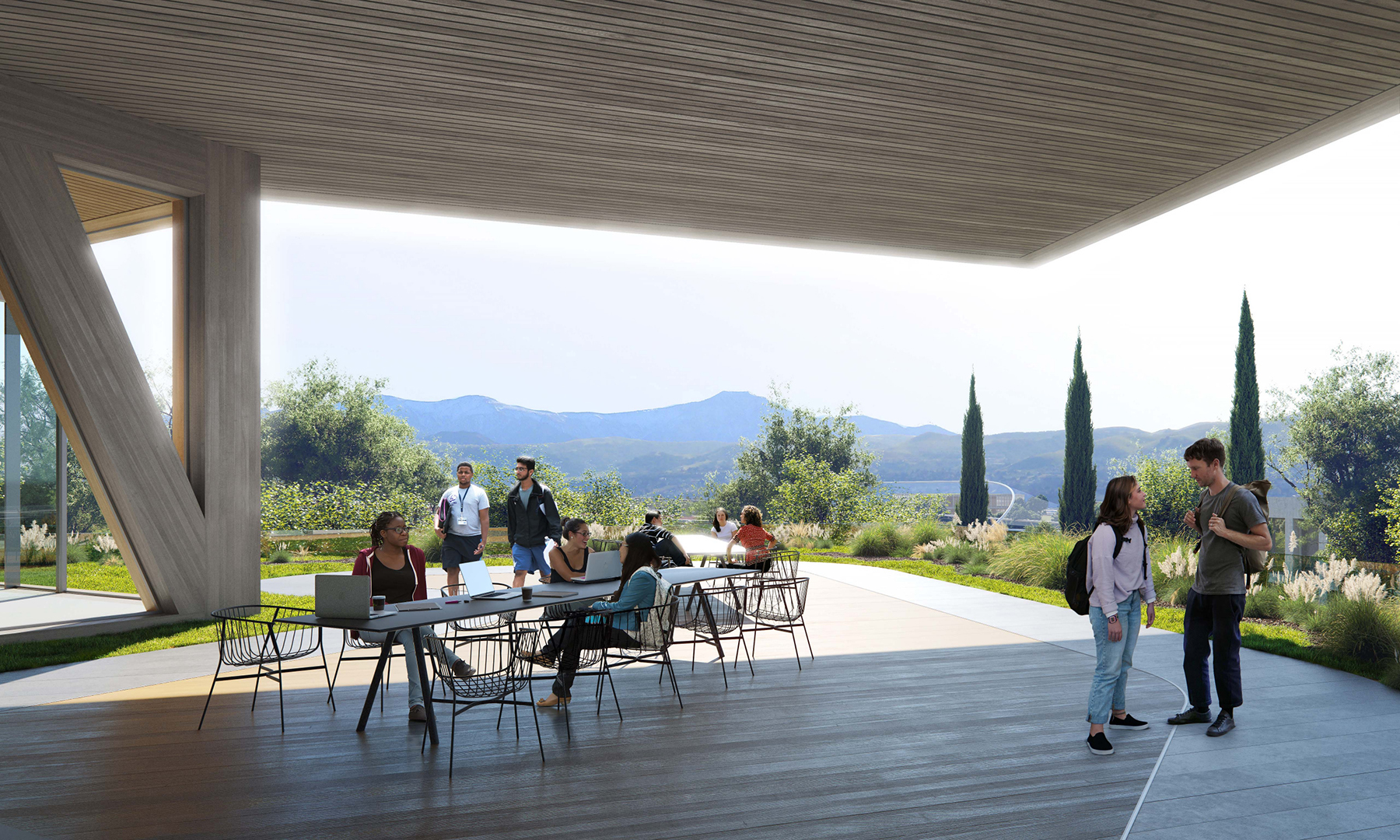
Terrace. (Rendering courtesy of BIG-Bjarke Ingels Group)
Because of the north-south slope of the campus, the building includes a ground floor that will be accessible on the south side of the building. This floor will include a cafe and a grand staircase leading up to the atrium.
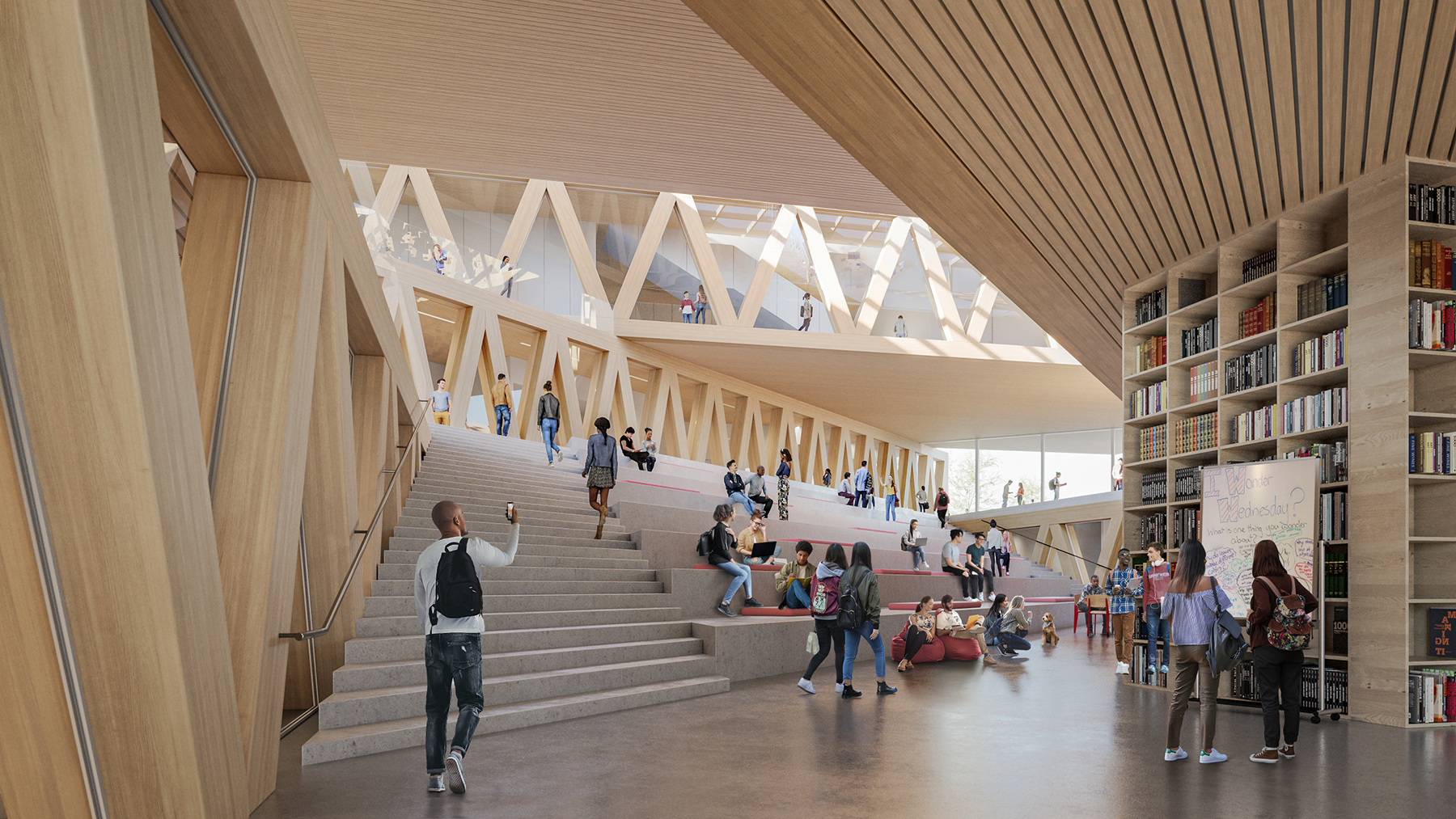
Atrium steps. (Rendering courtesy of BIG-Bjarke Ingels Group)
The building is intended to achieve Gold status in accordance with the Leadership in Energy and Environmental Design certification program. Among its sustainable features, the building will include about 9,000 sq ft of solar panels on its roof that will provide 200-230 MWh of energy production per year.
KPRS Construction Services Inc. is serving as the general contractor on the project, which is scheduled for completion in 2024. Saiful Bouquetprovided structural engineering services, while Atlas Civil Design Inc. provided civil engineering services. Mechanical, electrical, and plumbing engineering was conducted by Acco Engineered Systems. WSP USA served as the MEP and LEED consultant, while Jacobswas the lab planning consultant, and Arupwas the acoustics and information technology consultant.



